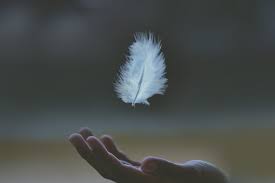
YOGA AND STORYTELLING
TRUTH
Whether we like it or not, everybody lives in myth. It's a fact that doesn't leave people undisturbed and this is because conventionally myth means falsehood and of course nobody likes to live in falsehood! Everybody believes they live in truth.
But there are many types of truth. Objective – Subjective, Logical – Intuitive, Cultural – Universal, Based on Evidence – Dependant on Faith. Myth is truth which is subjective, intuitive, cultural and grounded in faith!
Myth is essentially a cultural construct, a common understanding of the world that binds individuals and communities together. This understanding may be religious or secular. Ideas such as rebirth, heaven and hell, angels and demons, fate and free will, sin, satan and salvation are religious myths. Ideas such as sovereignty, nation-state, human rights, women’s rights, animal rights and gay rights are secular myths. Religious or secular, all myths make profound sense to one group of people. Not to everyone. They cannot be rationalized beyond a point. In the final analysis, you either accept them or you don't.
If myth is an idea, mythology is the vehicle of that idea. Mythology constitutes stories, symbols and rituals that make a myth tangible. Stories, symbols and rituals are essentially languages – languages that are heard, seen and performed. Together they construct the truths of a culture.
From myth come beliefs, from mythology customs. Myth conditions thoughts and feelings. Mythology influences behaviours and communications. Myth and mythology thus have a profound influence on culture. Likewise, culture has a profound influence on myth and mythology. People outgrow myth and mythology when myth and mythology fail to respond to their cultural needs. So long as Egyptians believed in the afterworld ruled by Osiris, they built pyramids.
MYTHS AND YOGA
Have you ever considered why it’s easier for us to identify with characters from myths and stories? Why is it that we enjoy storytelling, tales and fairy-tales so much? Why when you tell your child that they are beautiful, strong and smart and they are special they don't quite believe it, but when you tell them you are my little knight or princess they instantly relate?
The ground we walk on is solid but, the world we live in is enchanted by a rich web of story and myth. Myths are stories that help us to make sense of our world and connect our personal experience with the sacred. Yoga, too, is traditionally a discipline for connecting with the sacred through its different tools of disciplining the body, the mind, the breath, and the senses. While yoga’s poses are deeply rooted in Indian culture (including myth), modern yoga has come to be identified almost exclusively with its physical benefits. The connection between the individual psyche (which is actually the Greek word for “soul”) and the divine is ignored when we focus only on the body. For this reason, I personally like to introduce mythology into my yoga classes!
India has a long and fabulous heritage of myth and cultural symbols. These are common knowledge in India and some parts of the Eastern world but are quite surprisingly unknown to us westerners. Same goes for yoga classes. Mythology is not as clear to understand as physiology. It is also not a great part of western culture. Asanas, that relate to tangible things such as bones, muscles and alignments are easy to see, understand, to measure and observe. Myths work on our psyches in subjective and often invisible ways. They work more on the background in the area of our subconscious.
Painted with the broad strokes of human experience, these tales of cosmic struggle offer us a glimpse at life at a distance. Dealing with the widest range of human paradoxes and concerns, they speak a language we can all comprehend. In this way, these stories can help us to understand how we can bring the warring factions within ourselves into harmony.
WEAVE MYTHOLOGY IN A YOGA CLASS
How can a teacher best introduce his students to yoga's myths and symbols in a way that will enrich the practice? The truth is that it takes time and effort but you have to start from somewhere. Its half science half art and whatever you do you need to make sure you tap into your inner artistry and express your own unique truth as you perceive it in each story that you read and tell.
How does it work? During your daily life, you might think, see, hear or experience something that will instantly remind you of a deity, a myth or a story you have read. Rather than separating yourself from what you are facing or experiencing, choose to incorporate it into the class you’re teaching. This way, your class is more honest, you are better connected to the class, and you are also using the story to remind yourself what needs to be reminded of. A Win-Win situation for all!
The sight of a baby might remind you of a tale from Krishna's infancy. Or an argument at home or at work would recall a dispute between Shiva and Parvati. The secret here is to look for connections between the great epics and our lives, and those stories will undoubtedly throw light on our own dilemmas.
Few of us weave so effortlessly back and forth between daily life and the world of myth. Some asanas, however, just lend themselves to storytelling. You can pick one myth, or one asana, or a symbolic theme, and introduce it at the beginning or end of class.
Myths also lent themselves to the use of visualisation. It’s easier to visualise certain things that would otherwise be not so easy to imagine, such as the flow of energy or the colours of the chakras. Myths can set the right mind-frame for the student to accept ideas that he or she would otherwise be reluctant to accept. Visualisation lends itself to meditation and stories open the pathway towards a successful transcendence of the mind and soul. For instance, you can use the allegory of a flowing river while teaching pranayama. Tell your class about the tale of how the Ganges fell to earth and invite them to imagine a river running in through their feet, down their bodies, and out through their fingertips.
KEY STEPS TO A MYTHIC YOGA CLASS
- Read stories and highlight the key areas of the story that you need to remember. Try to focus on one storyline at a time.
- Ponder on the hidden meanings of each storyline. Keeping in mind that most stories are layered with teachings and these appear to us when we are ready to see them. This is apparent when we read or hear a story many times, at different stages in our lives and we understand it differently each time.
- Write down in your own words a generalised version of the hidden gems and teachings you found in the story. Try to bring these teachings into modern life and check to see where you have had common experiences. Making a connection with your personal experience will help you not only to better remember the story, but also to deliver it in a way that will be felt amongst your audience.
- Think of a title for your class that best suits your story. Write down 3 keywords that bring the title to life.
- Think of asanas that better suit the story, the title, or better embody the 3 keywords.
- Make your sequence in such a way that better serves your story. Decide on which part of your class you will deliver which parts of the story.
- Pair your asana class with other tools to support your tale. Chose the right music, the right breathwork, use mantras and mudras if you work with them.
- Close your class by re-emphasising the key teachings, maybe repeat the 3 keys words just before the class finishes.
- Whatever you do remember to make a connection from personal to universal and then back to personal. Unpack your myth whilst feeling every word you are uttering. The more you feel the more transformational your story will be.
Mythic Yoga Flow is a new style of yoga, created by the renowned teacher Sianna Sherman. I will be teaching a class in this style, titled ‘The Dragon & The Phoenix’ at the MBS Wellbeing Festival on Friday 24 May, 15:00 at the London Olympia.
Niko Geo





